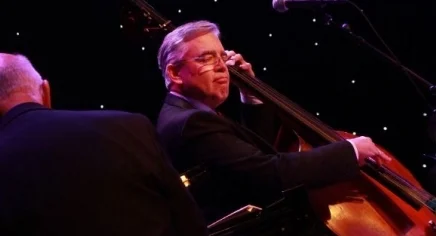In 1936 the Moscow Children’s Music Theater commissioned composer Sergei Prokofiev to write a symphonic fairy tale to help young audiences learn the instruments of the orchestra. In his Soviet-era opus Peter and the Wolf, the unique sounds of the different instruments conjure up the many characters of the story, which serve as mnemonic devices for children. Earlier this year, the New England Jazz Ensemble (NEJE) released their own commissioned version of the Prokofiev work, this time using the instruments of a jazz big band and multiple jazz grooves to tell the classic tale. The eponymous self-produced recording, which contains four other Peter-related compositions, is more than an educational tool, however. Like the original, it’s a masterful work of art in its own right.
Arranger/pianist Walter Gwardyak, a founding member and musical director of the NEJE, took on the task of translating Prokofiev’s classical composition into its Third Stream counterpart. As the musical tale progresses, the players wind through a multiplicity of jazz styles: swing, jazz waltz, blues, bossa, salsa, Dixieland, cool jazz. Each character has its own feel as well as its own instrument, a compositional nuance that “just happened,” says Gwardyak. “I wanted to retain Prokofiev’s melody because without it people wouldn’t recognize [the piece]. But I took a lot of harmonic and stylistic liberties.”
Taking such liberties is, of course, what jazz musicians have always done. The surprise here is the visceral cohesion of Gwardyak’s arrangement. Flitting about the trees, the bird, a soprano sax, warbles in modern jazz. The duck, a muted trumpet, slips into the water to a silky bossa. But when these two argue, their respective voices face off in a heated samba. Peter’s theme, the most memorable motif from the original, appears as a big band swing tune when Peter is gamboling about the forest; in its most amusing iteration, the theme appears as a Dixieland march during the celebratory parade after (spoiler alert) the apprehension of the Wolf. By some sort of musical alchemy, Gwardyak is able to subsume these stylistically variable ideas into one prepossessing narrative.
Singer Giacomo Gates, an inspired choice for librettist, does for the narration what Gwardyak does for the music. Using Prokofiev’s traditional tale as the source, he moved the text into the hipster vernacular, an idiom that comes easily to him. “Working with Giacomo is a dream,” said Gwardyak, who first collaborated with the jazz vocalist two decades ago. “I thought this would be a really great opportunity for him to put his gifts to work. And he did.”
The four additional commissioned tunes—two treatments of Prokofiev melodies and two thematically related originals—stand in contrast to Gwardyak’s through-composed big band piece. Trumpeter Jeff Holmes (“Serge’s Birds” and “Wolves”) and saxophonist John Mastroianni (“Power Serge” and “Waltzin’ with Wolves”) both approach the material from a modern jazz perspective, emphasizing distinctive harmonic developments, melodic extrapolations, and improvised solos. Holmes and Mastroianni, regular NEJE arranger/composers, work in a “slightly different style, unique to each of them. I thought this…added color to the album,” says NEJE president and bassist Steven Bulmer, the project’s producer.
From conceptualization through to final mastering (and informed by two live premieres), the recording took four years to produce. The release should command attention: With the debut of Peter and the Wolf NEJE becomes the first American performing arts organization to place the full-length classical composition in a jazz setting.
Though the recording was ready for release in the last quarter of 2017, NEJE held the album until early 2018—a strategic promotional decision. “We’re pursuing [the Grammy] in both the large jazz ensemble and best children’s album categories,” said Bulmer. “I think we’re one of the few jazz ensembles to ever be able to do that.”
(Reprinted from the September 2018 issue of Downbeat)
